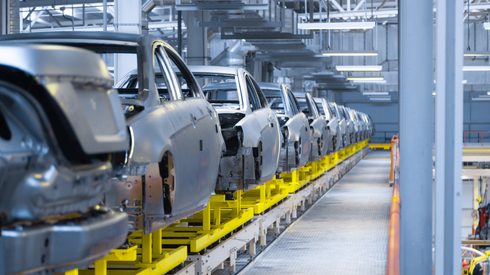There are a number of technical and regulatory challenges to gaining the benefits of e-fuels in vehicles that use internal combustion engines (ICEs) or hydrogen power, in terms of meeting carbon emission targets, panellists said at the Financial Times Future of the Car Summit held in London, May 7-9.
E-fuels are a class of synthetic fuels manufactured with the use of carbon capture technology, together with hydrogen extracted from water through the use of renewable electricity.
The primary purpose of electrification in the new generation of vehicles was recognized by the original equipment manufacturers (OEMs) represented on stage. But they had diverging views on the role of e-fuels in helping to achieve decarbonization targets by reducing the emissions of existing internal combustion engine (ICE) cars.
There was also a degree of scepticism on the use of hydrogen fuels in cars.
Barbara Frenkel, a member of the procurement team at luxury car maker Porsche, highlighted the potential benefits of developing the e-fuel industry alongside electrification.
“We [at Porsche] have invested in a pilot plant in Chile where we intend to demonstrate that e-fuels can be made using renewable energy such as solar and wind power,” Frenkel said, “and that by using renewable energy [to power vehicles] the process is closer to achieving zero carbon emissions.”
But some of the panellists and conference delegates doubted that e-fuels would offer a practical solution for the automotive sector’s carbon emissions issues, or that e-fuels would help to achieve the decarbonization targets that have been set for the end of the decade in Europe.
Andy Walz, president of the Americas division at carmaker Chevron, said that e-fuels would not provide a viable solution for mainstream users of light vehicles due to the high cost of production. For now, he said, Chevron would not be making investments in that sector.
The debate was sparked by a recent revision to the EU’s proposed ban on the sales of new vehicles with ICE power units from 2035. This now exempts ICE cars that run on e-fuels.
Some delegates at the conference noted that the lack of clarity on the role of e-fuels could disrupt current decarbonization efforts and investments going into the electrification of mobility.
The high cost of e-fuels is holding them back
But there was consensus among the panellists that a key aspect of the impracticality of e-fuels at present was their current high cost.
Pat Symonds, chief technical officer of Formula 1, the administrative body of Grand Prix motor racing, echoed the views of other panellists that the current high cost of e-fuels makes them impractical and that EU regulations should allow e-fuels to be blended with fossil fuels to create viable solutions for existing ICE cars.
Frenkel said that although e-fuels were extremely expensive at present, if the technology were scaled-up, then costs would go down significantly.
When asked about the potential use of hydrogen as an alternative to electric power, panellists still had doubts about its potential for light cars due to the technical and economic challenges.
“In terms of cars, I don’t see hydrogen as a viable solution,” Symonds said. “But for heavy-duty machines, where electrification is difficult – such as in the agricultural sector – it might have a future.”
This view was shared by other panellists including Emilio Scervo, chief technical officer of sports car maker Bugatti Rimac.
Scervo said that e-fuels could be an alternative to electric power in certain niche markets such as sports cars, as well as offering a possible way to help to decarbonize the southern parts of the world, where electric charging infrastructure is poorly developed.
Get your guide to commodity market trends, pricing dynamics and the automotive raw materials supply chain with Fastmarkets’ automotive suite. Learn more.






